Formula 1: Max Verstappen gets under the skin of top drivers
- Published
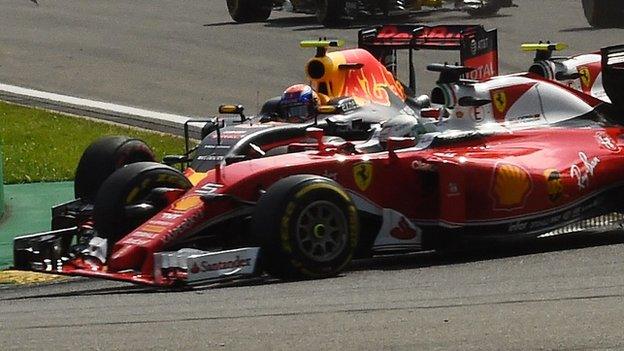
Three into one doesn't go. Max Verstappen collides with Kimi Raikkonen and Sebastian Vettel at the Belgian Grand Prix
Max Verstappen found himself at the centre of a lot of controversy following the Belgian Grand Prix for a series of incidents with other drivers.
The Red Bull driver is now getting a lot of stick from a number of directions, mainly from other drivers, whether it be Ferrari drivers Kimi Raikkonen and Sebastian Vettel, who he angered in the race, or ex-drivers such as Jacques Villeneuve.
The various incidents in question have also caused a lot of debate among the fans, who are clearly split depending on whether they are Verstappen fans or not - especially as Raikkonen has quite a large following himself.
When you look into the detail of the various incidents, they fall into three categories - each of which is quite different, and one of which was definitely very questionable on Verstappen's part.
The first corner
Let's start with the collision between Verstappen and the two Ferrari drivers at La Source hairpin at the start of the race.
That corner has historically always had someone trying to go down the inside, and it always pinches up and concertinas at the apex. There are so many accidents there.
The start is always tricky at Spa because the grid is on a slight uphill slope, whereas all your practice starts are done on the pit-lane exit, which is downhill.
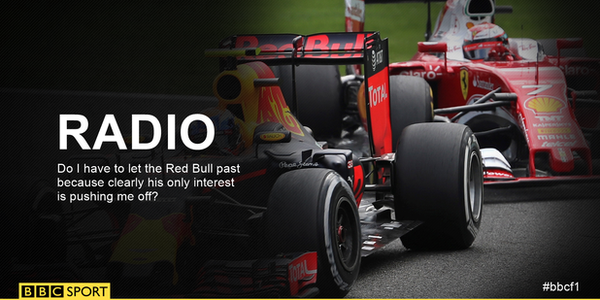
Raikkonen had several outbursts towards Max Verstappen at the Belgian Grand Prix, even calling the situation "ridiculous" - minus expletives.
Verstappen had a good initial kick off the line, but after that his start was bad. He lost places to both Ferraris.
He moved to the inside of Raikkonen approaching the first corner, which was a legitimate manoeuvre, but it was always going to be a reducing gap, and it was always going to require the assistance of Raikkonen and Vettel on the outside for it to come off.
That was shown by the fact Verstappen was right across the kerb as he hit the apex of the corner.
Raikkonen was the innocent party in the end. He was pinched from the inside, with Verstappen trying to squeeze by, and from the outside, with Vettel coming across not realising that, because Verstappen was there, Raikkonen could not take a normal line.
Ultimately, it was just one of those things - three into one does not go. So it was not Verstappen's fault, as such. It was a racing incident more than anything else.
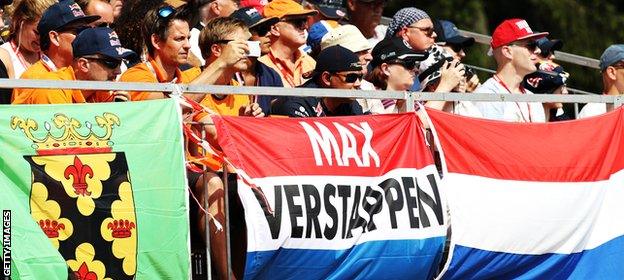
Despite all the controversy, there was a heavy Belgian-Dutch crowd at the Grand Prix that were not questioning the driving style of the 18-year-old
Having said that, the question I have is, did he need to do it?
He had lost the start. He was not going to lead into the first corner, which is what he would have been hoping for being the only one of the top five to start on the super-soft tyre.
The others were all on the soft, so Verstappen was always going to have to pit much earlier than the rest anyway. He was going to be in the pits in about four laps' time to change tyres.
Was he trying to recover ground that was already gone? In hindsight, you would probably say he did not need to make that particular manoeuvre and take that risk.
Pushing people wide at Les Combes
Verstappen had a series of incidents at Les Combes, the chicane at the end of the long straight, as he battled with other drivers - Vettel, Raikkonen and Force India's Sergio Perez.
He did not give them much room - he squeezed them wide. But they were trying to go around the outside, and if you do that there is always a risk you will run out of road.
Yes, the manoeuvres were hard. They were definitely not polite. But this is racing, and if you go around the outside, you're not going to get all the room you might like.
So, yes, it was on the limit, but probably fair enough.
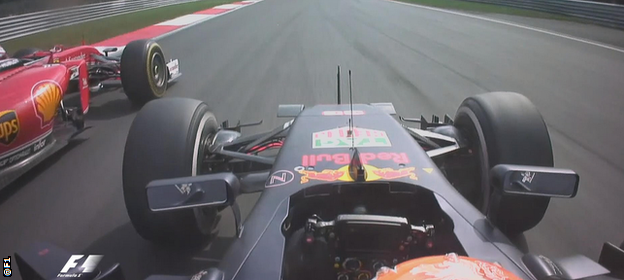
Kimi Raikkonen heads down the outside of Max Verstappen into Les Coombes, the two drivers later collided
On the straight with Raikkonen
The manoeuvre by Verstappen that stood out was the one on the Kemmel straight, when Raikkonen had the DRS overtaking aid open, and was closing at quite a rapid rate of knots.
It looked very much like Verstappen waited until Raikkonen committed to one side and them moved over to block very late.
It was a real sharp-intake-of-breath moment, and you could see why Raikkonen was so unhappy about it - both during the race, when he swore repeatedly over the radio, and afterwards, when he said Verstappen was going to cause a huge accident sooner or later if he did not alter his tactics.
This sort of thing happens in the junior formulae, but it is frowned upon in F1. If you have to brake in the middle of the straight, because of a blocking tactic, that is generally considered beyond the pale. It needs to be reviewed.
There is nothing in the rules that says drivers can't do that - and I don't think introducing new rules would be the solution.
These situations often arise when there is a young driver coming through who does not listen to what the older drivers think.
Verstappen wants to win. It was the same with Michael Schumacher and Ayrton Senna. They were quite happy to get stuck in there and ruffle a few feathers. And this will happen again.
I'm not the only one to see a lot of similarities between Verstappen and Schumacher in terms of their mentality - and Schumacher kept doing things that other drivers were unhappy about throughout his career
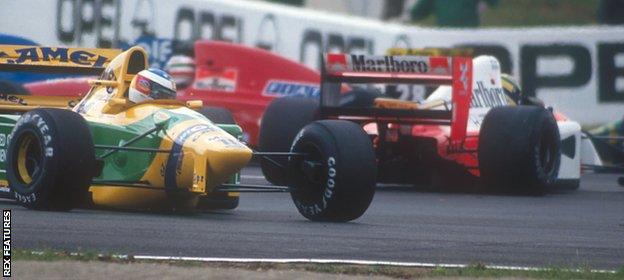
Michael Schumacher collides with Aytron Senna at the 1992 French Grand Prix
It is one for the drivers in their briefing on Friday to have a harsh and frank discussion about and sort it out - as I'm sure they will try to do in Monza this weekend.
I suspect, however hard they try, it won't work - just as it did not with Schumacher. I certainly don't see an easy solution.
For what it's worth, my view is that what Verstappen did on Kemmel was not acceptable and also unnecessary to move so late.
It's not so much that it happened at 200mph. What makes it so dangerous is the difference in speed between the two cars due to the Ferrari having the benefit of slipstream and the DRS open and the tiny amount of time for the driver behind to react.
I can tell you from personal experience that you make your commitment in those situations, and it is not something you can easily abort and get out of when things are happening that fast.
All in all, when Verstappen looks back at Spa, he might think that he finished 11th after starting on the front row - that's not a great weekend. And it all started with the tardy getaway from the line and that dive up the inside at the first corner.
What will define Max Verstappen is whether he learns from all that, which I am pretty sure he will.
More tyre controversy looming
Tyres were a huge talking point in Spa. It's highly likely that there will be a similar situation in Italy this weekend.
Some of that was down to the heat - I can only remember one other weekend when I have been at Spa when the temperatures were that consistently high - but it was much more complex than that.
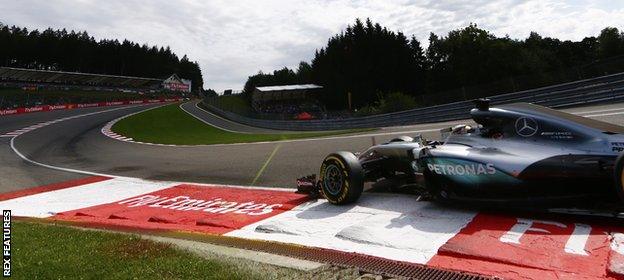
Spa's Eau Rouge corner is just one example of the long high-speed corners that put extra pressure on the tyres
Spa is a very tough track for tyres. It creates high loads because there is a lot of long, medium- and high-speed corners, so a lot of energy gets put into the tyre, and with energy you get temperature.
With the high track temperatures, the tyres were effectively boiling, so 'blisters' developed on the rear tyres. These emerged very quickly on the super-softs but also after eight to 10 laps on the soft tyres.
The soft and medium tyres were used at Spa last year. This year the teams were able to choose the super-soft because tyre choice has been opened up in an attempt to create more variability to the racing.
The final factor was the very high tyre pressures imposed by Pirelli over the weekend.
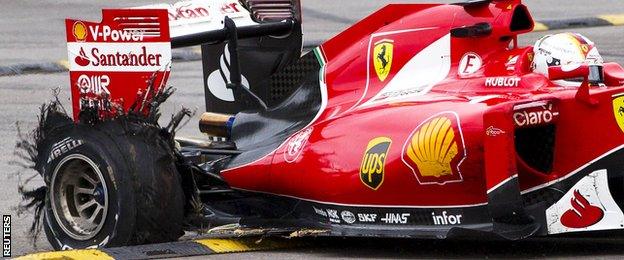
Sebastian Vettel was furious in interviews after the Belgian GP last year
They have their roots in the high-speed failures suffered by Nico Rosberg and Vettel at Spa last year.
At the following race, at Monza, Pirelli suddenly introduced much higher minimum pressures, to make the tyres more robust.
Last year, Pirelli wanted to raise pressures by five psi at Monza, although they were persuaded to reduce that to just one psi after complaints from the teams and drivers.
At Spa last year, the front tyre pressure was 19.5psi and the rear 18. This year, those numbers were 23.5 and 22. That is a huge percentage difference.
Higher pressure makes the tyre more stable by stiffening up the construction, but also reduces its mechanical grip, which is why people were talking about "balloon" tyres. It means the tyre tread's surface contact patch is reduced, because the tread becomes rounder. And that reduces grip.
Monza is a very different circuit from Spa. But it does have 70% full throttle and the highest top speeds of the season. And just as with high g-forces, the centrifugal force created by high speeds puts tyres under extreme strain. It is not unknown to have slightly higher tyre pressures for this type of track.
The teams have the same three tyre choices for Monza, so we can expect to see very slow out laps again.
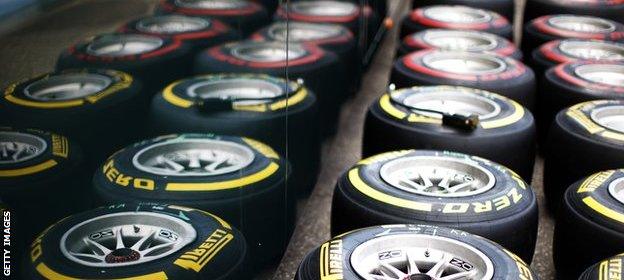
Tyre choices will once again become a major talking point at the Italian Grand Prix - despite the circuit's contrasting layout to Spa
Pressures are measured when the tyres go on their car - that is when they have to be above Pirelli's mandatory minimum. A driver can lower them by driving as slowly as possible before starting a performance run.
So what teams are doing is heating up the tyres more than they would normally do in their blankets before putting them on the car. Driving slowly on the out lap then reduces the pressures, so they can run lower out on the track.
Pirelli is hoping to do try to solve this problem by introducing a new tyre with a more durable construction. This was tested in Spa and will be tried again in Monza this weekend, and the intention is to introduce it as a race tyre from Malaysia onwards next month.
Pirelli has always maintained that it is hamstrung by a lack of testing - a situation that is being addressed as they develop new, wider tyres for the faster cars that will be introduced next year.
Never want to miss the latest formula 1 news? You can now add F1 and all the other sports and teams you follow to your personalised My Sport home
- Published1 September 2016
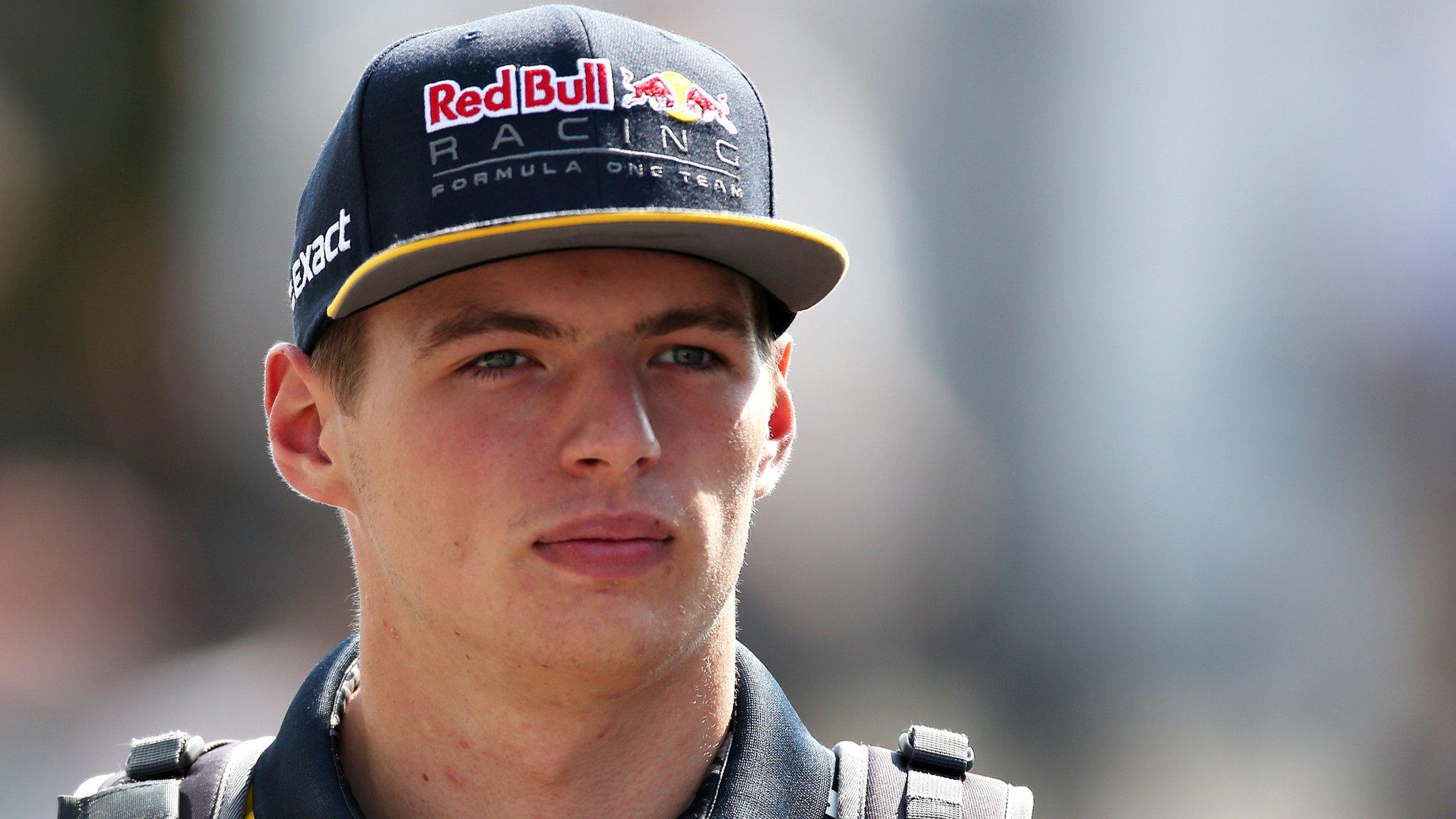
- Published31 August 2016

- Published31 August 2016
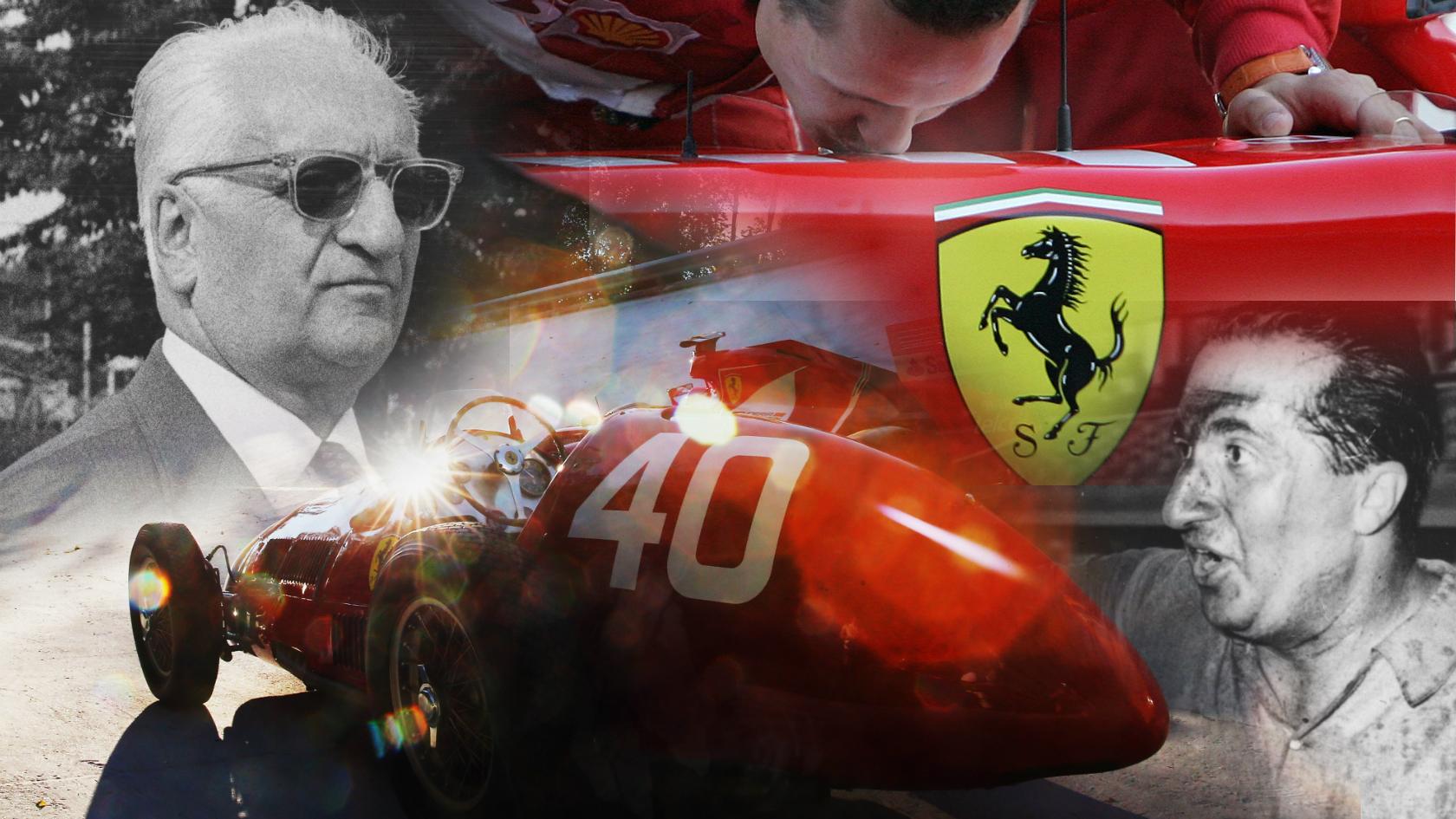
- Published1 September 2016

- Published18 December 2015

- Published2 November 2018

- Published26 February 2019
